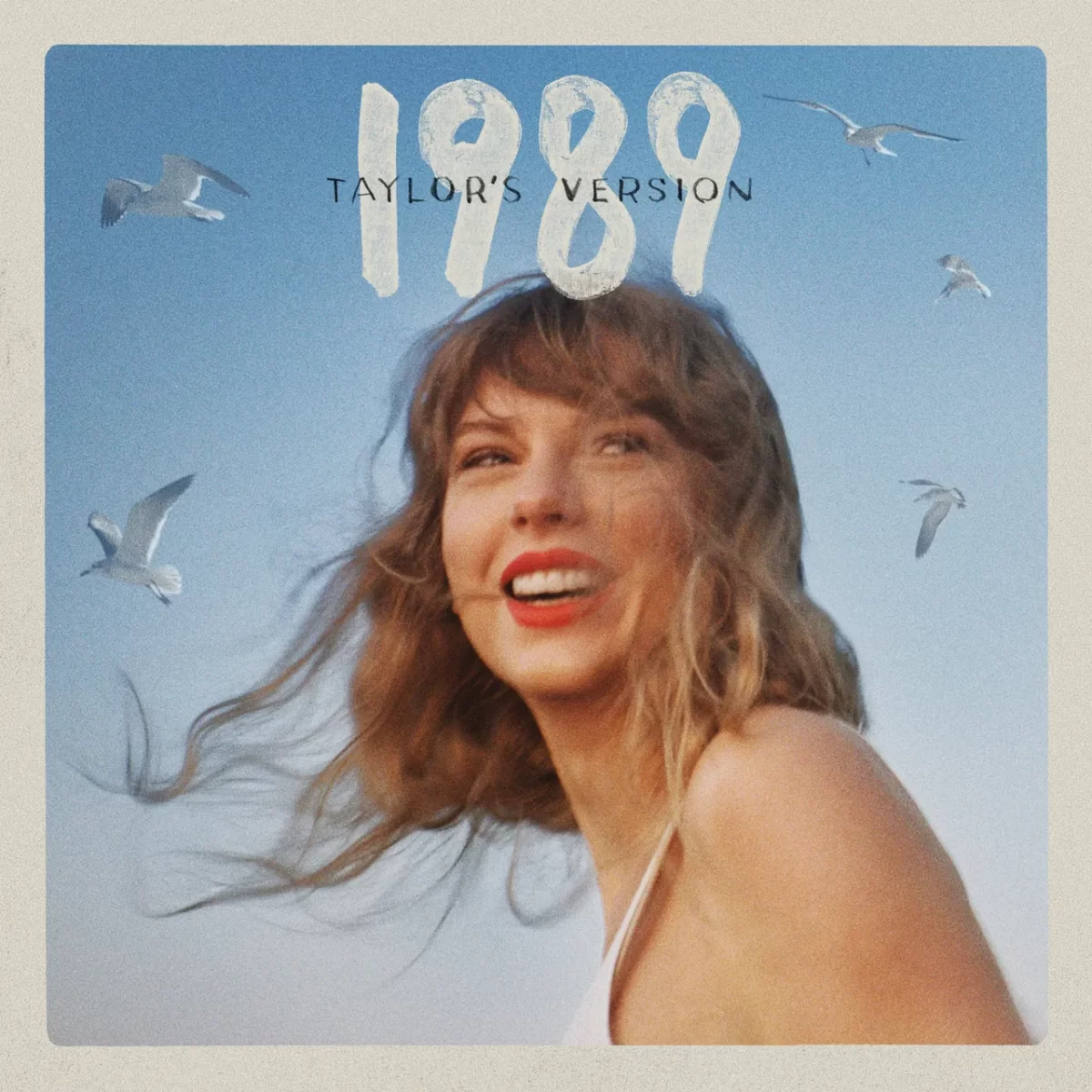Her name is Taylor Swift and she was born in 1989.
Taylor Swift has been on a journey of re-releasing her first six albums. On Oct. 27, the “Taylor’s Version” of “1989” came out, becoming her fourth re-released album.
The original release of “1989” was in 2014 and it was a pop sensation, winning a Grammy for album of the year and best pop vocal album. The album perfectly captures the era of 2014 and represents nostalgia as it is one of the best pop albums that makes little contemporary references as a synth-pop album.
On Aug. 9, Swift announced the re-release of the album at the final show of the Era’s Tour in Los Angeles at SoFi stadium.
“1989 (Taylor’s Version)” takes listeners through a journey with 21 songs, including five previously unreleased tracks. The day after its release, Swift launched “1989 (Taylor’s Version) (Deluxe Edition),” featuring an additional version of “Bad Blood” with Kendrick Lamar featured, which fans were quick to gravitate to.
The entire album was first branded in 2014 as the exploration of freedom by a young woman in a new city, captured in a Polaroid evident by the original album cover.
The aesthetic for the re-release has changed to a coastal beach escape. The two album covers are strikingly different with symbolism embedded into them. The biggest difference is that “Taylor’s Version” shows Swift smiling while the original cover is her with a straight face.
Swift has mentioned how she chose not to smile originally because she hated her smile. With “Taylor’s Version,” she has reclaimed herself and her album, gaining her smile back. The seagulls trapped in her shirt on the original cover are free in the background of the new cover, symbolizing that she is finally free and an ode to the 13th track that she is finally “clean.”
Her long-time friend and collaborator, Jack Antonoff, is a producer on the album and is credited with the majority of the songs. He is a staple part of it and his production qualities amplify the album’s original sound.
Fans anticipated if any production would change on their favorite tracks. In the past, with re-recordings, Swift has altered the original sound to fit a new register. This was also the case for some songs on “1989.”
Songs with the most striking differences are “Style” and “Welcome to New York,” which have slight changes to the guitar key and the pitch she sings in. For most of the tracks, the production change is minimal and the songs sound relatively the same.
After a first listen, it is evident the album captures a new era of pop and reinvention. However, the long-anticipated vault tracks stole the show.
The first vault track “S–!” was not what fans originally anticipated. With “1989” being a heavily pop album, there was speculation the song would be a satirical upbeat song like “Blank Space” or a devastating song referencing the slut shaming Swift endured.
However, sonically, the song took fans by surprise as the lyrics became a clever way to reclaim the word. The track’s chorus takes back the word and the shame, saying, “If they call me a s–, you know it might be worth it for once / if I’m gonna be drunk, might as well be drunk in love.” The song alludes to Swift’s hyper-criticism of her dating life.
The second vault track “Say Don’t Go” is a perfect example of Swift’s songwriting abilities and her skill for storytelling. It is heavily infused with the ‘80s synth-pop sound about an intense doomed love that can be understood in the second verse with the lyrics “Now I’m pacin’ on the shaky ground / Strike a match, then you blow it out.”
The third vault track, which stands out from the rest, is “Now That We Don’t Talk,” with lyrics like “I don’t have to pretend I like acid rock / Or that I’d like to be on a mega yacht.” It’s the most fun and strong of the five vault tracks with its sound and lyrics.
The fourth vault track “Suburban Legends” is another great example of Swift’s storytelling with lyrics like “Tick-tock on the clock, I pace down your block / I broke my own heart ’cause you were too polite to do it / And you kissed me in a way that’s gonna screw me up forever.”
The final vault track “Is It Over Now” is the most honest song on the entire album. Sonically, it is upbeat and airy while its lyrics are lethal.
The song is rich with conflict within a relationship. It’s a retelling of a devastating and nasty breakup with lyrics like “If she’s got blue eyes, I will surmise that you’ll probably date her (Oh, no) / You dream of my mouth before it called you a lying traitor (Oh) / You search in every model’s bed for somethin’ greater, baby.”
“1989 (Taylor’s Version)” is a lap around the music industry that celebrates Swift’s reclaim of her works and herself from the media. It launches her further ahead on the curve for pop superstardom.
It’s a re-recording that fans have been waiting for and one that’s been waiting for fans. It’s a new soundtrack with a beat that even 10 years later people want to dance to.









